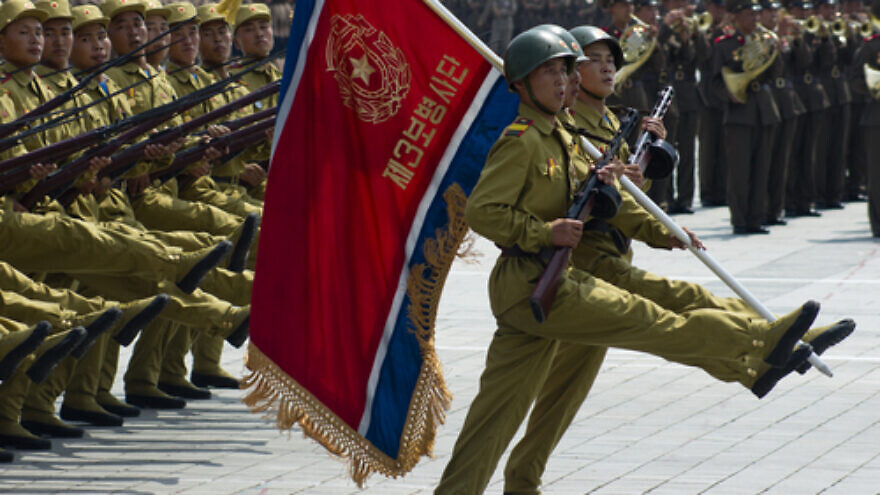May I remind you what a hellhole North Korea is?
The Democratic People’s Republic of Korea—that’s it’s official and fraudulent name—is a dynastic totalitarian dictatorship in which, according to Freedom House, “arbitrary arrests and detention are common, and punishments for political offenses are severe. The state maintains a system of camps for political prisoners where torture, forced labor, starvation, and other atrocities take place.”
North Koreans are “classified according to their family’s level of loyalty and proximity to the leadership under a semi-hereditary caste-like system known as songbun. Those who are classified as ‘wavering’ or ‘hostile’ instead of ‘loyal’ face official discrimination in employment, live in poorer housing, and receive limited educational opportunities, though rules can be manipulated through bribery.”
In contrast to the Republic of Korea—the official and truthful name of the South, which has evolved into a free and prosperous nation—the North is unable to produce enough food for its 26 million people. Emigration is illegal and those attempting to escape, the regime threatens, “will be shot without warning.”
Last week, North Korean Supreme Leader Kim Jong-un—his father, Kim Jong Il, was “Dear Leader” and his grandfather, Kim Il Sung, “Great Leader”—welcomed senior officials from China and Russia to celebrate “Victory Day,” the 70th anniversary of the armistice that halted three years of intense armed conflict on the Korean Peninsula. A military parade featured goose-stepping soldiers, tanks, drones and “Hwasong-18” intercontinental ballistic missiles.
Since no peace treaty was ever signed, the Korean War never really ended, which makes it America’s longest war. To this day, roughly 30,000 U.S. troops remain in the South to deter the North.
Over the decades that followed the armistice, American diplomats negotiated a series of deals intended to prevent North Korea from acquiring nuclear weapons. Time after time, the regime pocketed American concessions and cash, while breaking its promises. Kim is now estimated to possess more than 50 nuclear warheads. (Remember that when considering the on-again, off-again talks with Tehran.)
Over the past two years, he has conducted dozens of illegal missile tests. U.S. efforts to impose sanctions on North Korea at the U.N. Security Council have been blocked by Russia and China. They insist that Kim is merely responding to the threats posed by the United States, Japan and South Korea.
That echoes their claim that the Korean War began when American “imperialist aggressors” invaded the North. In truth, Kim Il Sung attacked the South in June 1950 with permission and approval from Soviet dictator Josef Stalin.
Chinese dictator Mao Zedong subsequently sent “volunteers” backed by Soviet air power to support the North in the “War to Resist America and Aid Korea,” aka the “Grand Fatherland Liberation War.” An estimated four million Koreans died. Nearly 40,000 American troops were killed.
At least Americans now understand this history and no longer harbor illusions about North Korea, right? Not quite.
Last week, self-described “peace advocates”—including Code Pink and the Quincy Institute—gathered in Washington for a three-day event called “Korea Peace Action: National Mobilization to End the Korean War.”
They are demanding that the United States sign a formal peace agreement with the North. Would that include guarantees of non-aggression by Kim, a timeline for him to give up his nuclear weapons and progress on human rights? Not quite.
“The effort is a deception,” Ji Seong-ho, a member of South Korea’s National Assembly, writes in The Wall Street Journal. Korea Peace Action is “parroting the regime’s ‘hostile policy’ refrain—that tensions on the Korean Peninsula result from U.S.-South Korean military exercises, the presence of U.S. troops in Korea, and U.S. economic sanctions.”
“This issue is personal for me,” adds Ji. Born in the North where he and his family “were close to death from starvation,” he survived by scavenging “bits of coal from freight trains, which I would sell to buy food on the black market.
“When I passed out from hunger on the railroad tracks, a train ran over me and almost totally severed my left leg and arm, which both had to be amputated without anesthesia or antibiotics.”
Eventually, on crutches, he managed to escape through China and Southeast Asia before reaching South Korea in 2020.
He notes that a key organizer of the demonstrations is Christine Ahn, who has said her goal is “to liberate Korea” from “the yoke of U.S. imperialism” and that America is “the world’s aggressor and empire.” She has described Hawaii as “occupied territory.”
At least no one in Congress is buying this nonsense, right? Not quite. Rep. Brad Sherman’s Peace on the Korean Peninsula Act has drawn 45 co-sponsors. Ahm and associates are lobbying for more.
Undecided members would be well advised to read an article, published last week in Foreign Affairs, by Rep. Mike Gallagher, Chair of the House Select Committee on the Strategic Competition Between the United States and the Chinese Communist Party, and Aaron MacLean, a Senior Fellow at the Foundation for Defense of Democracies.
They warn that now as in 1950, the United States “has failed to make sufficient military investments,” thereby “tempting a tyrant in Beijing who harbors imperial ambitions to try his luck.”
The Chinese Communist Party remains adept at “twisting the truth to advance its ambitions” and propagating false narratives. (Remember what the CCP has said regarding the pandemic that emerged from Wuhan.)
Gallagher and MacLean conclude: “In its last war with China, Washington failed to deter its adversaries, failed to prepare its military, and prolonged the fighting…. The next time, the stakes will be even higher—and Washington must do better.”
We have plenty of time to make the necessary policy changes, right? Not quite.


























